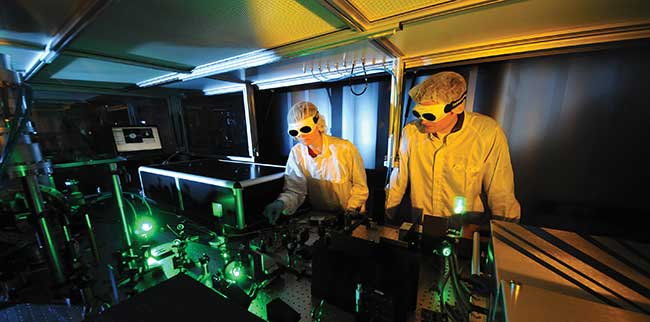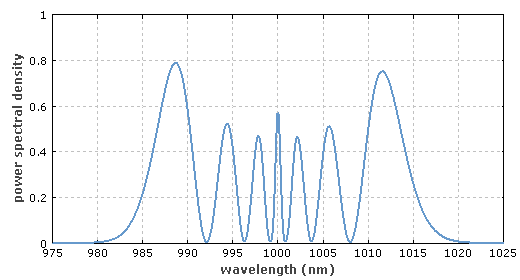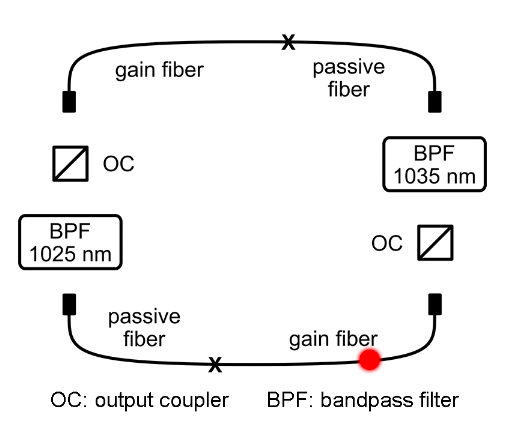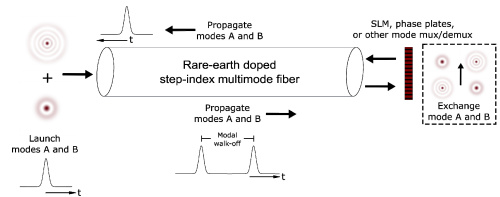
Ultrafast fiber lasers are found in labs worldwide, but could they soon dominate industry? Courtesy of BSCL.
Researchers at Cornell, Colorado State, and Kapteyn-Murnane Laboratories believe ultrafast fiber lasers could hold an abundance of untapped potential. The collaborative research team published a proposal of “new directions” for the devices in an April edition of Optics Express. Their promising evaluation reveals the benefits of using nonlinear dynamics in pulse generation.
What are ultrafast fiber lasers?
Ultrafast fiber lasers are mode-locked lasers capable of emitting pulses in the picosecond to femtosecond range. Fiber lasers attain three key advantages over other ultrafast systems. First, rare-earth-doped fibers attain a large gain bandwidth. Active fibers also have a high gain efficiency and can therefore operate at low pump powers. Finally, fiber lasers come at a relatively low cost.

Today, ultrafast fiber lasers are commonly used in spectroscopy, material processing, and optical coherence tomography. Courtesy of Photonics.com
Ultrafast Fiber Lasers Today
Today, these lasers are commonplace in laboratories worldwide. They have shown to be especially useful in metrology, imaging, and spectroscopy. Despite use in some femtosecond micromachining applications, they remain mostly restricted to scientific research rather than industry. The authors of this paper believe capitalizing on nonlinearity effects could greatly expand the current market for ultrafast fiber lasers.

The above figure a nonlinear effect known as self-phase modulation (SPM) can lead to spectral broadening. Courtesy of RP Photonics.
What is Nonlinearity?
Nonlinearity in optics describes media that respond with intensity-dependence. Nonlinear fibers experience nonlinear effects due to (1) inelastic scattering phenomenon and (2) changes in refractive index with optical intensity. This results in Self-Phase Modulation (SPM), Cross-Phase Modulation (XPM), Stimulated Brillouin-Scattering (SBS), Stimulated Raman-Scattering (SRS), and Four-Wave Mixing (FWM).
Nonlinearity is a necessary obstacle in ultrafast fiber lasers. Nonlinear effects are a main limiting factor in transmission capabilities, but it is also required for mode-locking. Scientists and engineers have historically tried to combat effects of nonlinearity in fiber systems. This research group, however, looks to use it to their advantage. Their paper takes a look at some of the most promising avenues for nonlinear dynamics in ultrafast fiber lasers.

Above is a schematic of a standard Mamyshev oscillator with slightly offset bandpass filters. Courtesy of Wise Research Group.
The Mamyshev Oscillator
Mamyshev oscillators consist of two Mamyshev regenerators coupled together with gain fibers. In this design, pulses oscillate between two offset filters due to the energy gained from SPM-induced spectral broadening. The filters also prevent continuous-wave (CW) lasing, so the cavity only emits high-intensity pulsed light.
The Mamyshev oscillator has shown to perform at the same level as the currently dominant Ti:sapphire laser. The team says that this new design, however, outperforms in terms of cost, size, and reliability.
Without Mode-Locking
The paper also looks at ultrafast fiber lasers in an “unprecedentedly versatile format”: non-mode-locked systems.
Non-mode-locked systems typically require great lengths of fiber. This makes the laser more susceptible to dispersion losses, especially at higher energies. Introducing multiple compressors (in sequence) to the system can alleviate these symptoms. A multiple compressor system better balances dispersion and nonlinearity effects.
Of special interest once again is the compression and shaping powers of the Mamyshev regenerators. Researchers can use these devices in combination with gain-switched diodes, intensity modulators, or a dispersive self-phase modulation (DSPM) compressor to normalize and compress light into ultrashort, high-energy pulses.

The above graphic shows how a double-pass setup for a multimode fiber can manage modal dispersion. Courtesy of OSA Publishing.
Multimode Fiber Lasers
As the name suggests, multimode fibers can support much larger modes than single-mode fibers. Consequently, they are more flexible for dispersion engineering and phase-matching nonlinear processes. Multimode ultrafast fiber lasers could be extremely effective at manipulating nonlinearity effects. The research team proposes this mostly unchartered frontier could produce peak powers in the multi-gigawatt range.
The multimode fiber proposal “adds new dimension” and flexibility to ultrafast lasers. It is a much more complex system than its single-mode counterpart, nevertheless there is undoubtedly potential in its versatility and high-power capabilities.
Looking Forward
Nonlinearity is unavoidable in ultrafast fiber lasers. The authors describe it as “the traditional bane of physicists.” As such, most ultrafast fiber lasers are designed to minimize nonlinear effects rather than embrace them. This paper presents a wide range of options for taking advantage of nonlinear dynamics in these systems.
Ultrafast lasers have already made significant impact on the scientific world. These devices allow humans to observe the fastest processes in nature. Now, researchers must approach ultrafast fiber lasers in a completely new way to translate them from the lab to industry.
For a more detailed look at possible directions for the ultrafast fiber laser, check out the paper here.
